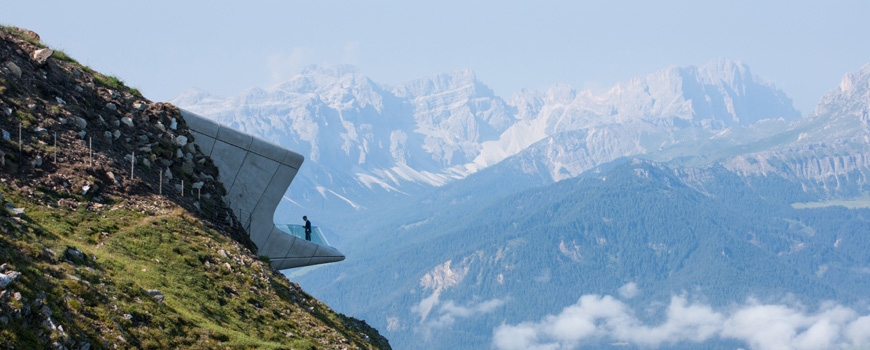MuSe Science Museum, Trento
Trentino-Alto Adige, Italy

MuSe is a science museum that opened in Trento in July 2013; it is housed in an iconic building, designed by Italian architect Renzo Piano, whose shape metaphorically resembles that of a mountain. With over 600,000 visitors a year, MuSe is the most popular science museum in Italy.
The MuSe’s mission is ”To explain Nature, beginning from the mountain landscape, with the eyes, the instruments and the questions of the scientific research, rising the challenges of today, encouraging scientific curiosity and the pleasure of knowledge so to give value to science, innovation and sustainability”
On six floor levels, the permanent exhibition of the MuSe presents the history of life on Earth together with a number of topics related to science and nature, by the means of specimens, skeletons, dioramas, models, multimedia exhibits, interactive games, graphics, photographs, and description panels in Italian, English, and German.
The program of activities and events of the museum includes learning activities for students and teachers, temporary exhibitions, educational workshops, and special events focused on various cross-disciplinary subjects, such as the relationship between food and nature and how technology and design were inspired by nature.
Along with exhibition spaces and laboratories, the museum building, fully accessible to physically-impaired people, includes a tropical greenhouse, a museum store, a cafe, and a panoramic terrace overlooking the Adige river valley.
View of the central foyer, detail. Photo © Inexhibit
More on the design of the MuSe Science Museum by Renzo Piano
The urban project
The MUSE is part of a new urban district created by redeveloping a former industrial area, located in the western part of Trento, dismissed in the 1980s. The urban renovation project redesigned an entire portion of the city. The old industrial facilities have been converted into commercial and retail complexes, residences, offices, and public buildings such as MuSe.
Bird’s eye view, photo Alessandro Gadotti – Archivio TrentoFutura
View of the new district and night view of the MUSE; photos Alessandro Gadotti – Archivio TrentoFutura
Cross section, courtesy of Renzo Piano Building Workshop.
Architecture
The MuSe building extends on five levels above ground and two levels under the ground, one of which contains a car parking. The building’s high sustainability has been obtained through the broad use of renewable sources and high-efficiency technical systems. The metaphor that inspired the architecture of the museum is that of a mountain, clearly discernible by the sequence of sloping surfaces which characterize its exterior.
The museum’s covered plaza; photo © Inexhibit.
MUSE, ground floor plan
Museography and exhibition design
Internally, MuSe consists of a number of hybrid and interlinked multifunctional spaces.
The exhibition galleries, presenting a different theme on each level of the building (high mountain tops, alpine nature/climate, geology, people/sustainability, history of life on Earth/tropical greenhouse) are coupled with areas featuring hands-on exhibits, workshops, recreational spaces and learning areas specifically addressed to children and schools. The galleries, which ideally have to be visited by starting from the building top and progressively descending to the ground floor, are arranged around the core of the museum, a large central void, conceived to let the visitors perceive the museum as a coherent whole. Inside this full-height space, an imposing installation is housed, made of taxidermied animals, suspended in the void, and arranged so as to mirror the vertical distribution of alpine fauna.
Views of the central foyer which is “populated” by stuffed animals. Photo © Inexhibit
Schematic view of the foyer exhibition concept, courtesy of Renzo Piano Building Workshop.
The exhibition layout is inspired by the zero-gravity principle, a definition coined by Renzo Piano meaning that all exhibits and internal elements are arranged so as to be as visually lightweight as possible. For example, monitors, display cases, and graphics panels are supported by thin cables running from floor to ceiling, and the exhibition spaces are brightly lit and designed to encourage socialization and curiosity. Yet, such an approach has also some drawbacks, for example, the absence of physical (and acoustical) separation between the functional areas inevitably makes the galleries a bit noisy.
Another popular feature of the MUSE is its tropical greenhouse, a gallery physically separated from the rest of the museum for technical and climatic reasons and dedicated to biodiversity which accommodates 132 African plant species.
Finally, the museum includes several spaces for educational activities, including workshops, laboratories, and learning rooms.


Views of the permanent exhibition galleries: most of the exhibits are hung from the ceiling suspended by steel wires. Photos © Inexhibit
One of the reconstructions of the prehistoric inhabitants of the Alps. Photo © Inexhibit.
The tropical greenhouse. Photo © Inexhibit.
How our readers rate this museum (you can vote)
copyright Inexhibit 2024 - ISSN: 2283-5474


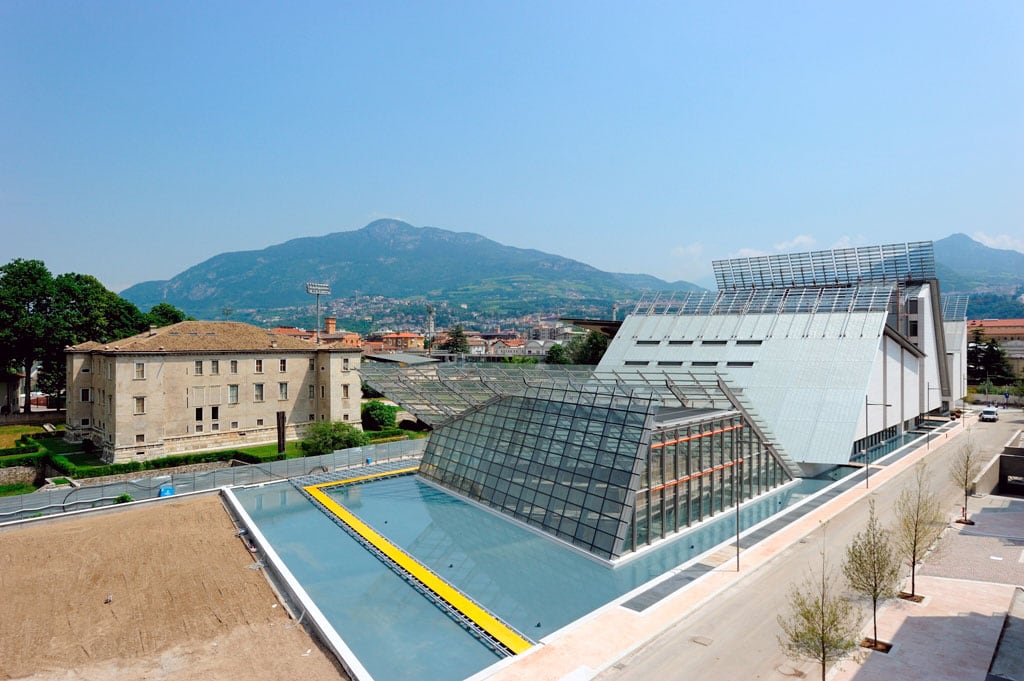




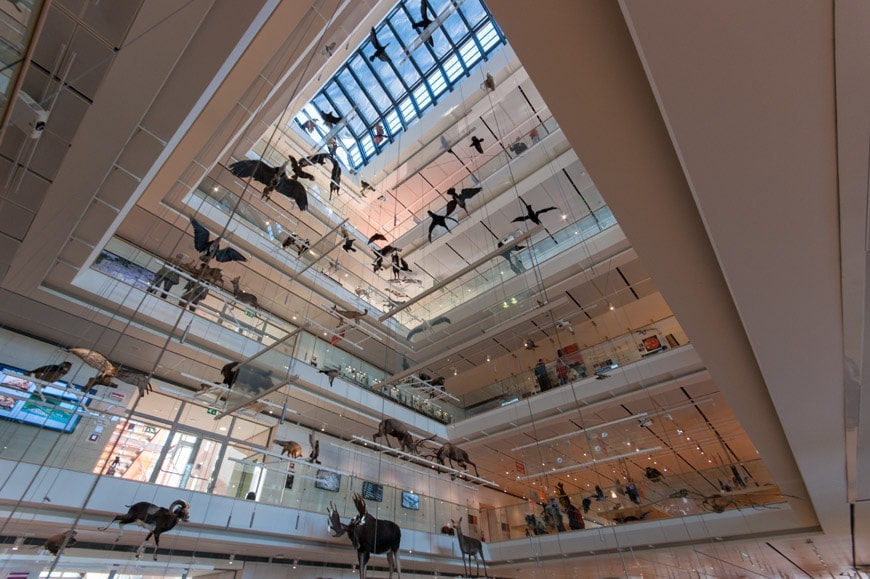
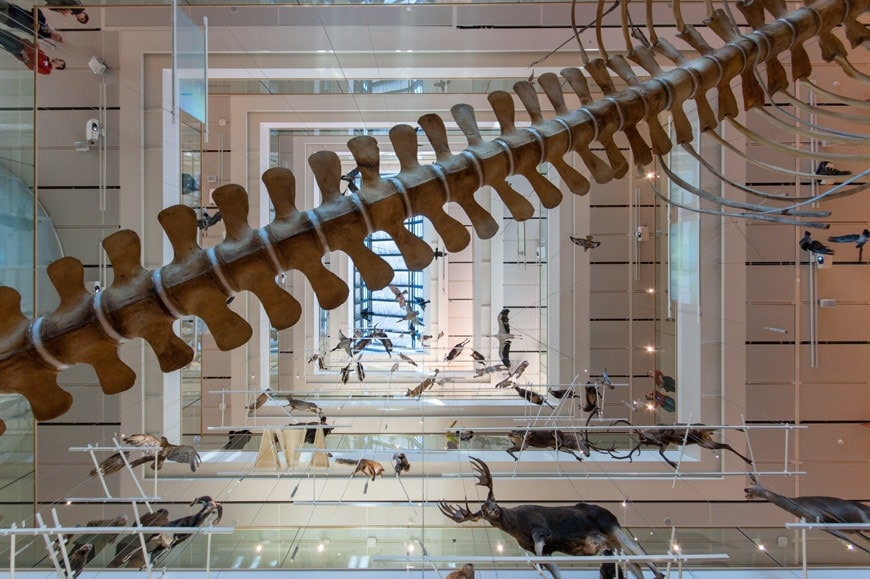



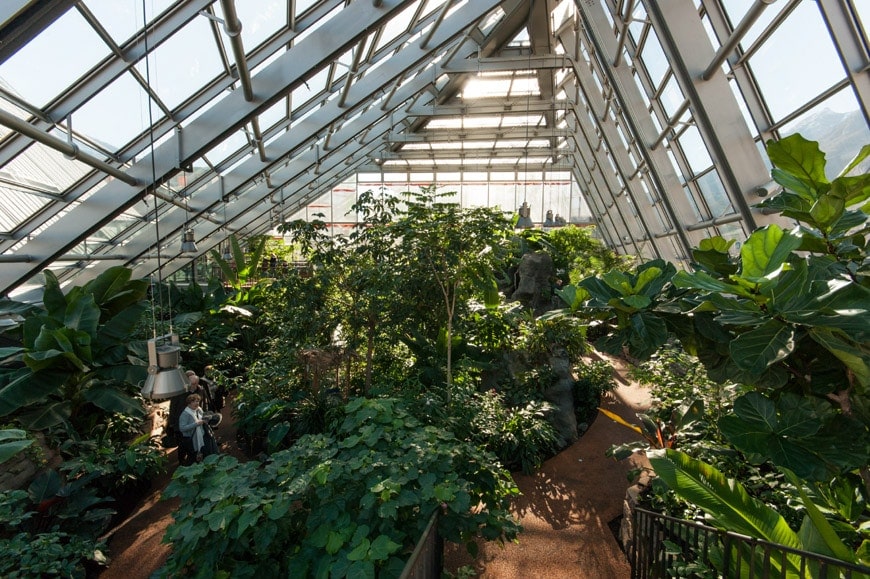


 (10 votes, average: 3.90 out of 5)
(10 votes, average: 3.90 out of 5)